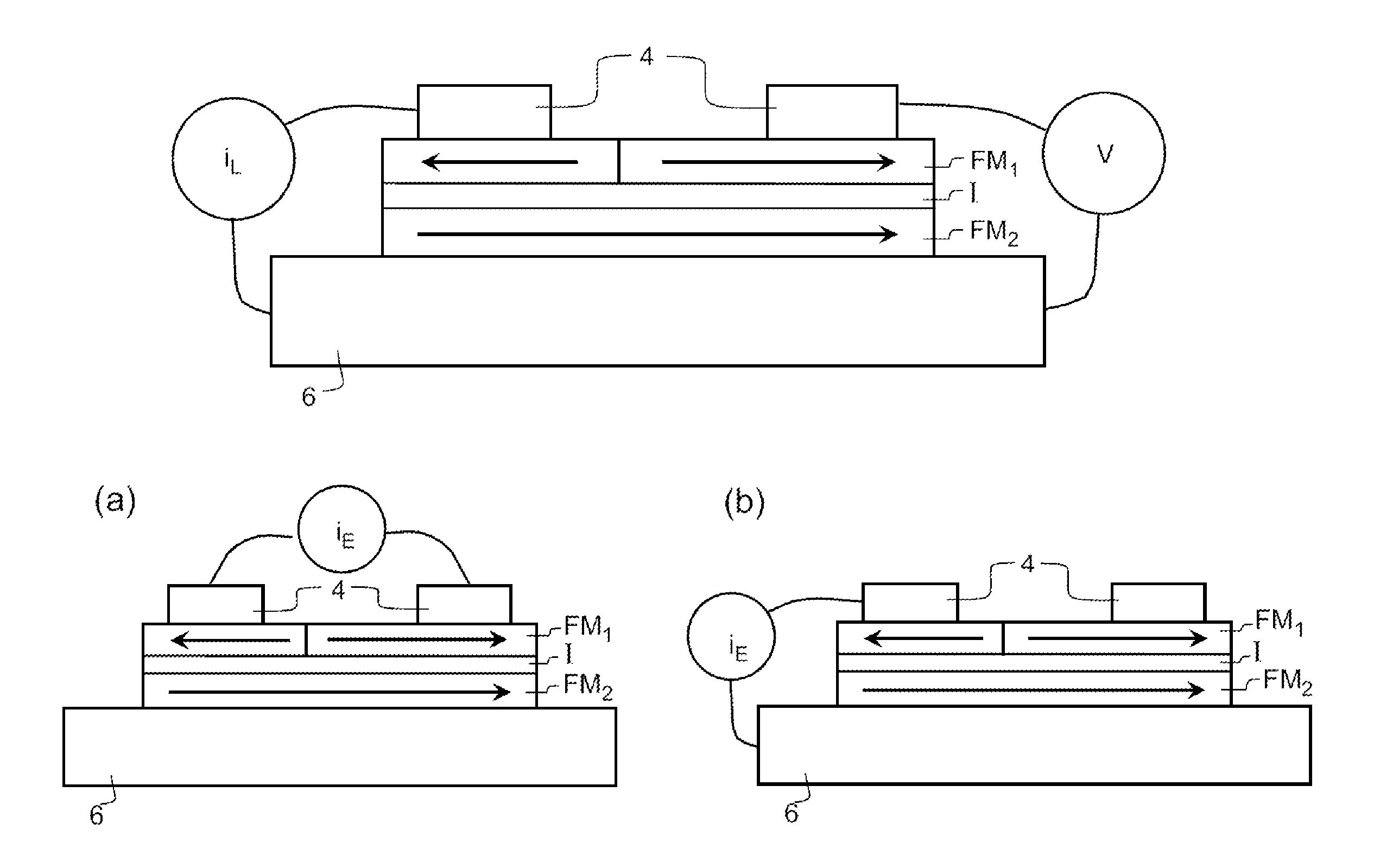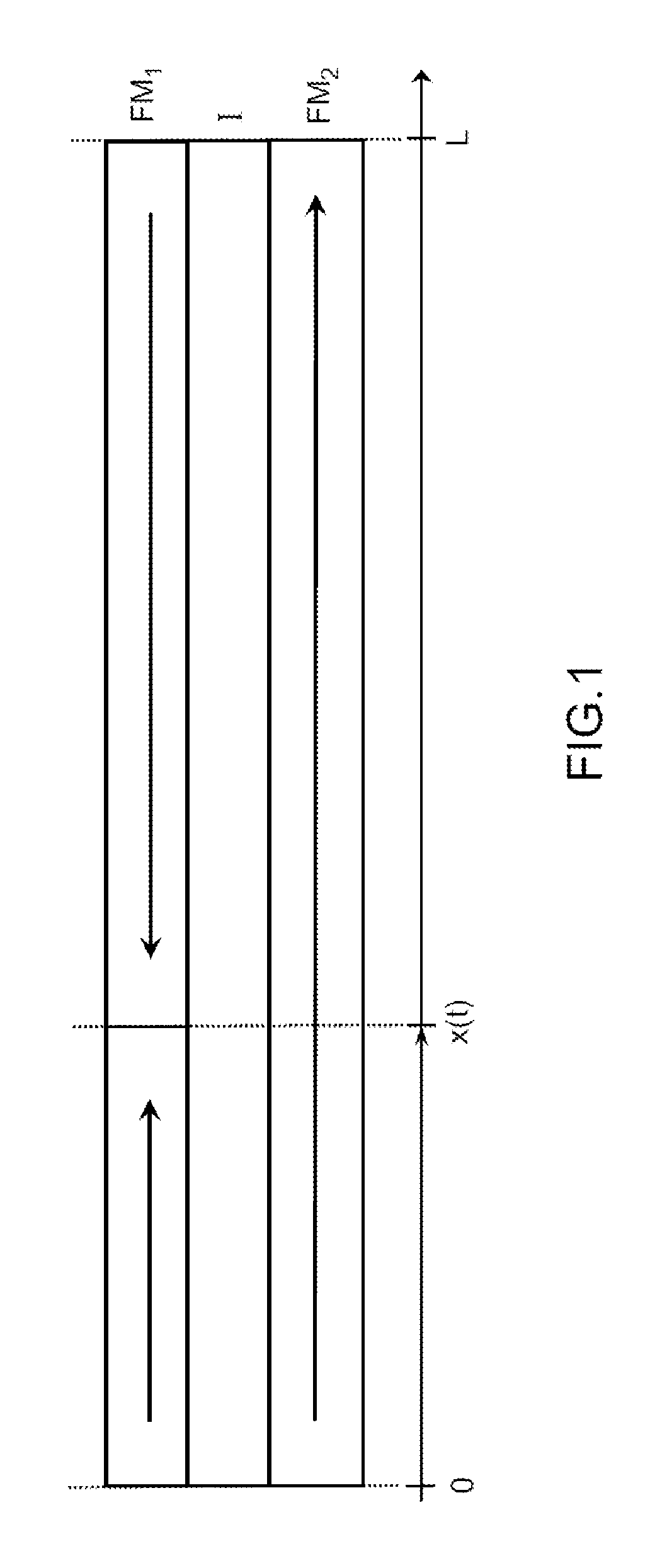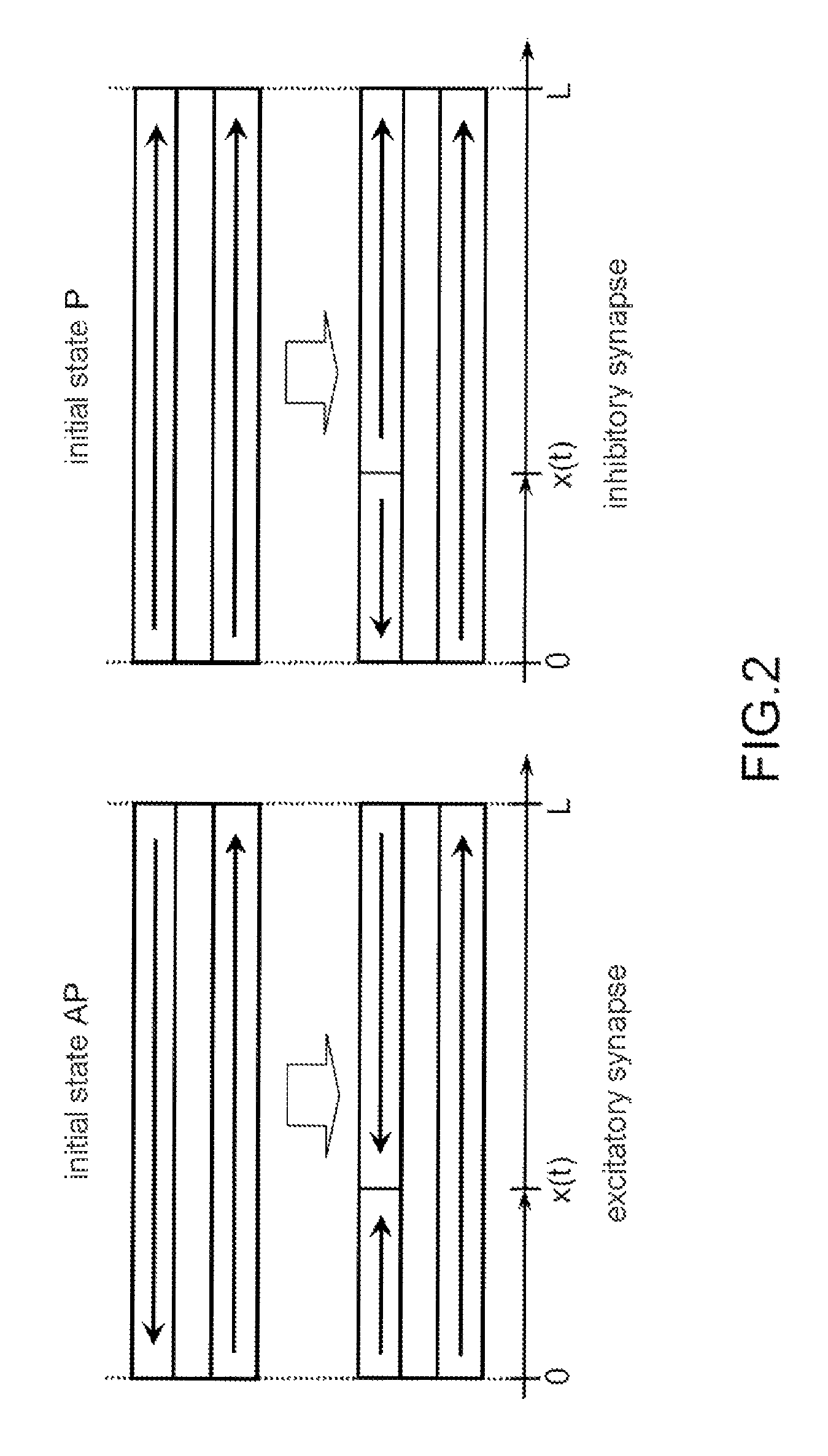Memristor device with resistance adjustable by moving a magnetic wall by spin transfer and use of said memristor in a neural network
a technology of resistance and magnetic wall, applied in the direction of information storage, static storage, digital storage, etc., can solve the problems of low operating speed, device fragility, and inability to quickly perform seemingly simple processes by most powerful computers using the most advanced algorithms. to achieve the effect of limiting the risk of component deterioration
- Summary
- Abstract
- Description
- Claims
- Application Information
AI Technical Summary
Benefits of technology
Problems solved by technology
Method used
Image
Examples
Embodiment Construction
[0028]FIG. 1 is a schematic diagram of an example magneto-resistive memristor according to the invention, comprising two magnetic elements FM1 and FM2 forming elongate layers of length L, the elements FM1 and FM2 being separated by a non-magnetic element I also forming an elongate layer of length L. The layer I is an insulant or a semi-conductor. The direction of magnetization of the two magnetic layers FM1 and FM2 are shown by arrows. Thus, in the case of FIG. 1, a magnetic wall is present in FM1 at a position x which may vary over time t, while the magnetization is homogeneous in FM2, which has no magnetic wall.
[0029]The resistance R of such a magneto-resistive structure is different depending on the arrangement of the magnetizations in the two layers. If the magnetizations are oriented in the same direction, the arrangement is referred to as “parallel”, i.e. both arrows in the same direction in FIG. 1, and the resistance is noted as R═RP. If the magnetizations are oriented in opp...
PUM
 Login to View More
Login to View More Abstract
Description
Claims
Application Information
 Login to View More
Login to View More - R&D
- Intellectual Property
- Life Sciences
- Materials
- Tech Scout
- Unparalleled Data Quality
- Higher Quality Content
- 60% Fewer Hallucinations
Browse by: Latest US Patents, China's latest patents, Technical Efficacy Thesaurus, Application Domain, Technology Topic, Popular Technical Reports.
© 2025 PatSnap. All rights reserved.Legal|Privacy policy|Modern Slavery Act Transparency Statement|Sitemap|About US| Contact US: help@patsnap.com



